Inside: This easy and fun rainbow science activity is so pretty! Every time we do it, kids ooh and ahh in appreciation. Detailed instructions, a simple scientific explanation, and science printables are included below.
Learning doesn’t have to be boring!
One of the best ideas you can use to make learning memorable and fun is to try doing science experiments in the comfort of your own kitchen.
I know you would agree that no matter how large your home is, the kitchen is the heart of it.
That’s where we come together, laughing, talking, and gobbling up yummy food. It’s where the magic happens, memories are made, and nourishing and nurturing are brewed from unconditional love, compassion, commitment, and a few cookies thrown in for extra flavor.
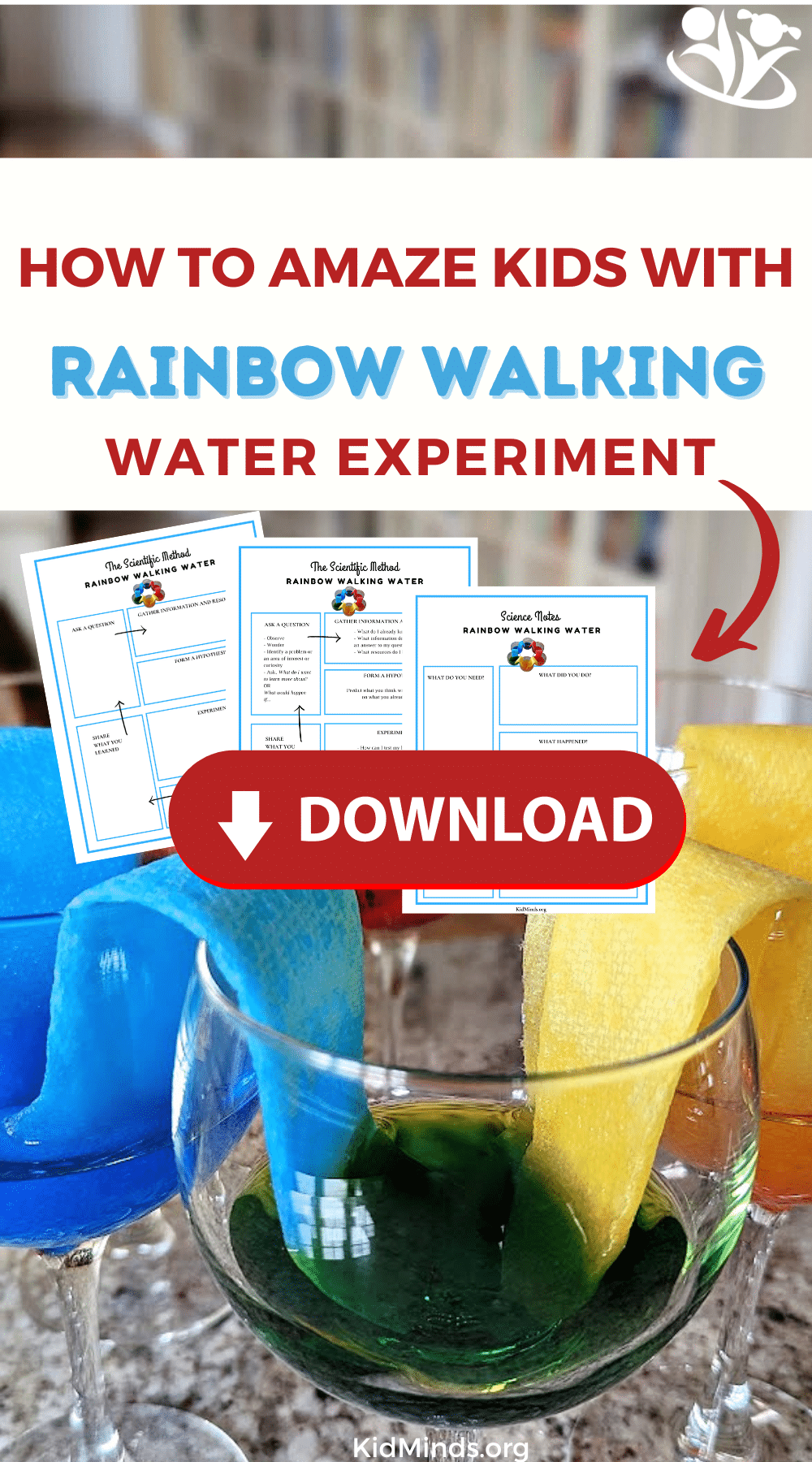
9 Benefits of Kitchen Science
- Get kids excited about science
- Encourage higher-level thinking
- Tap into creativity
- Keep the brain stimulated
- Sharpen memory
- Increase bonding and connection
- Boost self-esteem
- Fire your child’s imagination
- Practice problem-solving skills
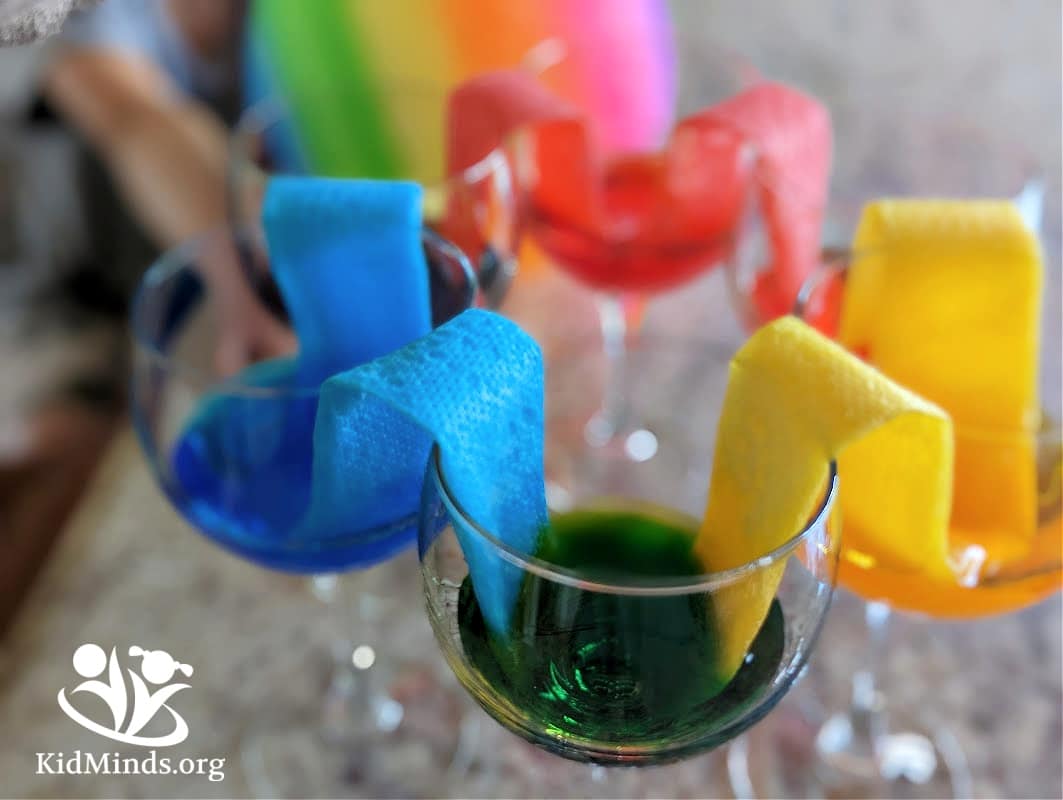
Some of the secrets (and pleasures) of doing activities with your kids are learning to go with the flow, picking simple ingredients, planning in advance, allowing for free exploration, and simply laughing when mistakes (and messes) happen.
As always, if you want to turn this activity into a science lesson, scroll down to the Science section and download the printables that go along with this activity.
Water Science Experiment
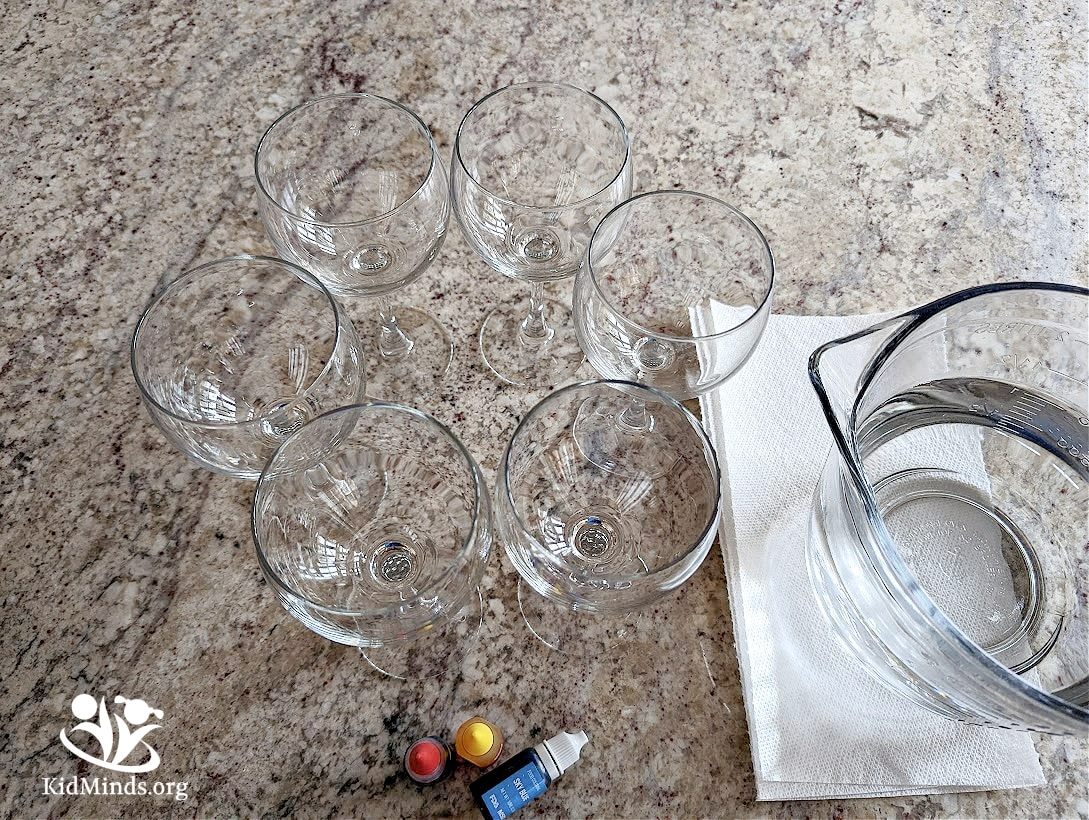
What you need
6 cups, jars, or glasses
Paper towels
Food coloring
Water
What to do
1. Paper towels
Take a section of a paper towel and fold it in half and then in half again. Ours was 11 inches long and folded over to be 1 inch wide. We trimmed it to be 7 inches long so that one end touches the bottom of the first cup and the other touches the bottom of the second cup.
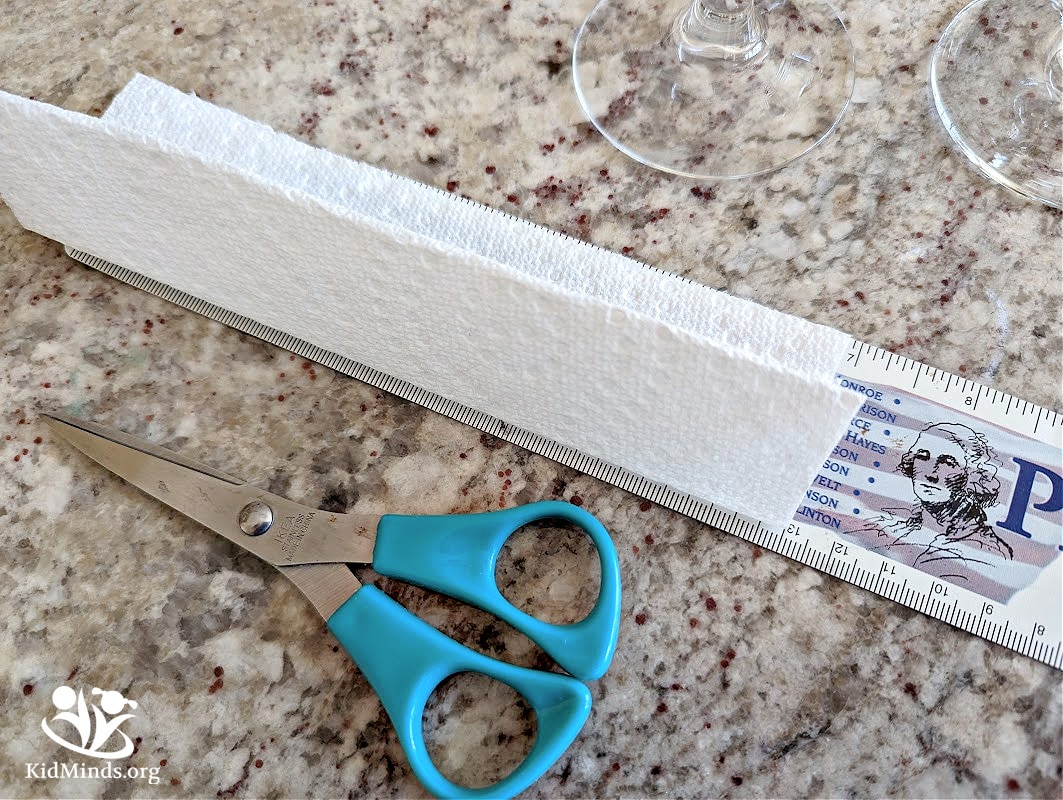
We tried this experiment without trimming and didn’t like how the paper towel sagged with the weight of water between the cups.
Repeat so you have six strips of paper.
2. Color
Line up all 6 cups and add the food coloring in this order:
Red
No color
Yellow
No color
Blue
No Color

3. Water
Add water only to the cups with color dyes, and move the cups to form a circle.

4. Place
Place the paper towels in each cup (including the no-color cups)

5. Observe
Dyed water immediately starts moving up the paper towels. The pic below was taken about 5 minutes after adding towels.

What do you think is going to happen to empty glasses in a few more minutes? You can use our science sheets below to make a prediction and write down your hypothesis.
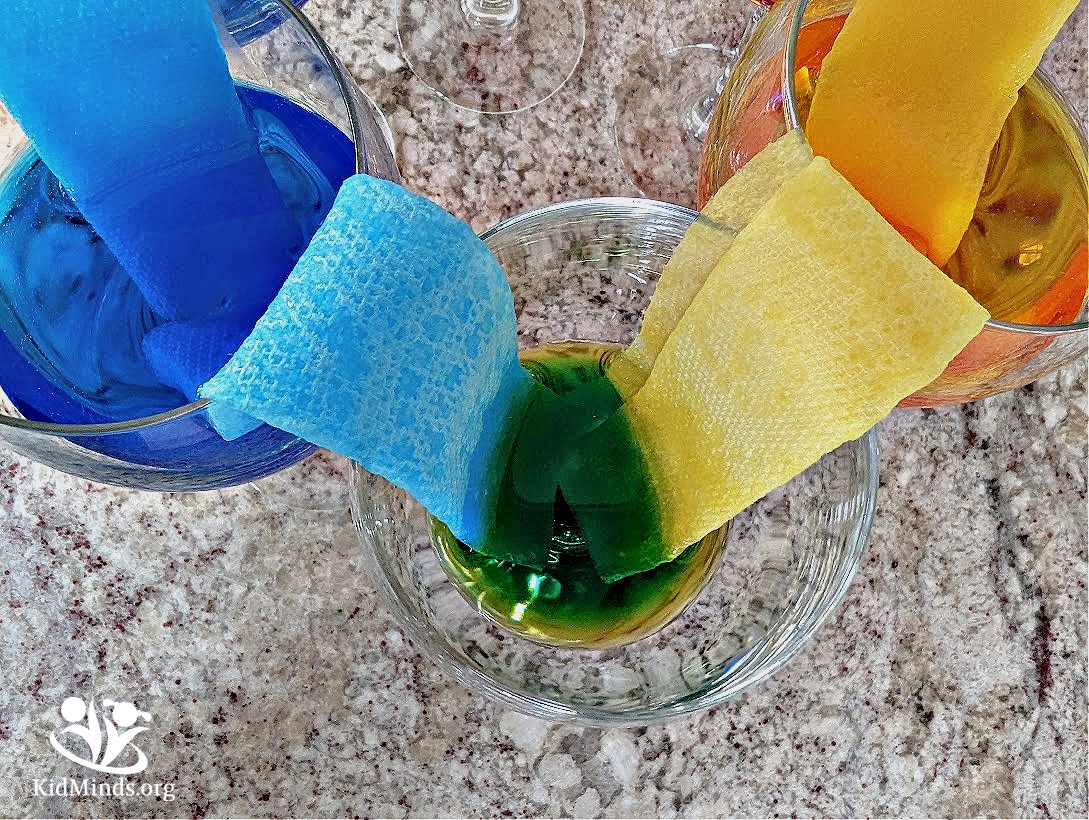
Amazingly enough, the empty cups begin to magically fill up with secondary colors. In the pic above, we can see how yellow and blue create a vivid green right in front of our eyes.
It takes 2-3 hours to complete the experiment, and the results are pretty amazing.

Blue and red mix to make purple. Yellow and blue mix to make green. And red and yellow mix to make orange.
The Science of Walking Water
How can water move up the paper towel and defy gravity? Because once you get down to the level of molecules, other physical forces have a bigger effect.
The water appears to defy gravity due to the process called capillary action. It combines the action of adhesive force (attraction between the water and the fibers of the paper towel) and cohesive force (attraction between the water molecules).

Adhesive Force refers to the attraction between unlike molecules – it’s the attraction between the water and the paper towel. Molecules tend to glom together, either because there’s a tiny force of gravity between them or because they have positive and negative charges that attract each other, just like magnets.
The other force, Cohesive Force, refers to the attraction between the water molecules, which means that once one water molecule is drawn to the paper towel, other water molecules will follow, and eventually, all the water will head up the paper towel, carrying the colored pigment with it.
What’s interesting is that the adhesive forces between the water and the fibers of the paper towel are stronger than the cohesive forces between the water molecules. It’s what results in water traveling up the paper towel.
But how long does it take?
That can be the subject of the next experiment!
PIN this activity for later!
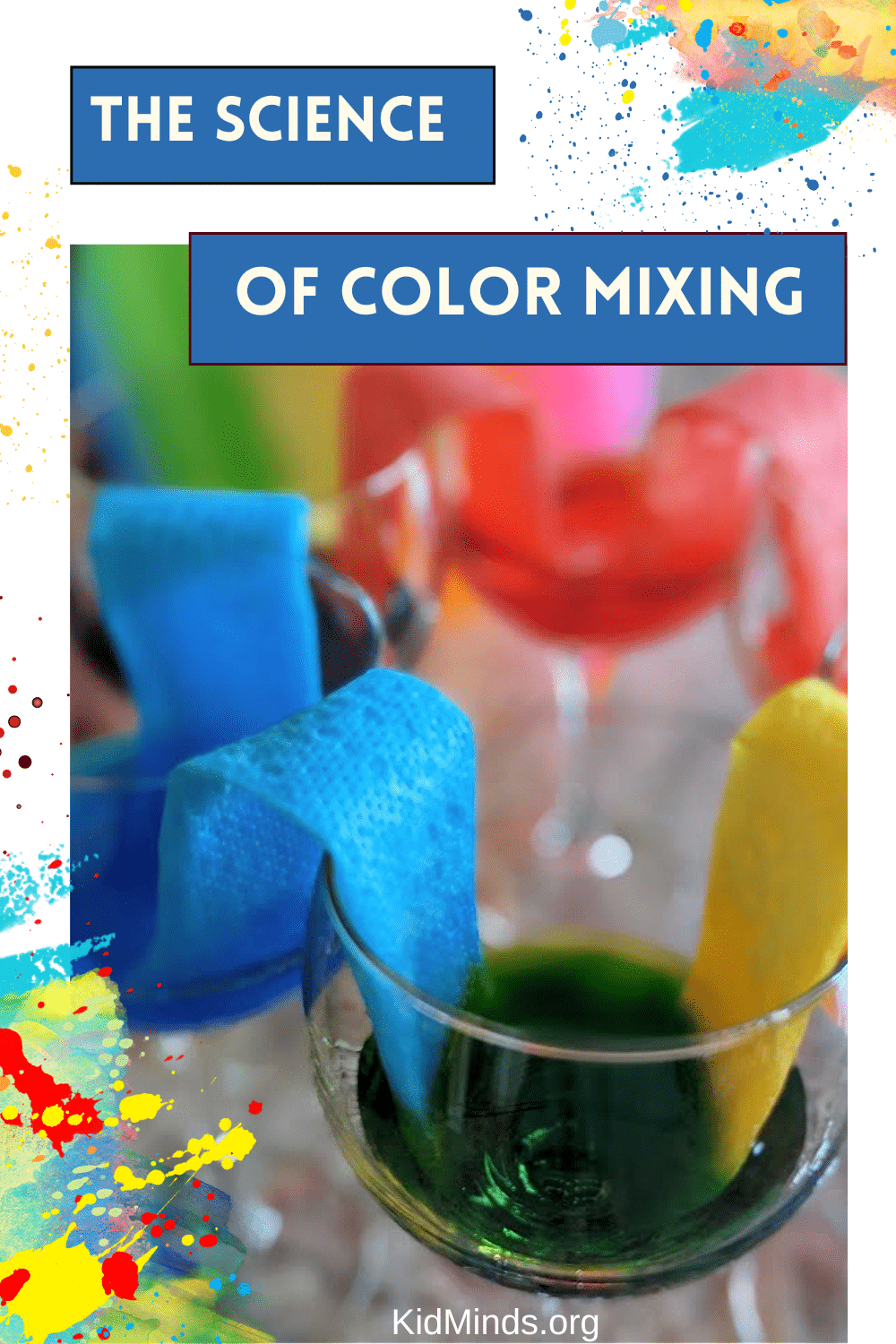
The Science of Color Mixing
Then there are the colors. We started with what’s called primary colors: red, yellow, and blue. When primary colors mix, they’re called secondary colors. Red and yellow make orange, yellow and blue make green, and blue and red make purple.
Colors are really just our brains’ way of visually interpreting wavelengths of light. Light travels through space in an energy wave, which can either have short waves all squashed together (towards purple) or long waves stretched out (towards red).
Did you know – other animals can see more colors than us? Bees and butterflies can see ultraviolet – colors that are beyond purple. And flowers produce ultraviolet pigments to attract these pollinators to them! Imagine what a garden looks like according to a butterfly…


Leave a Reply